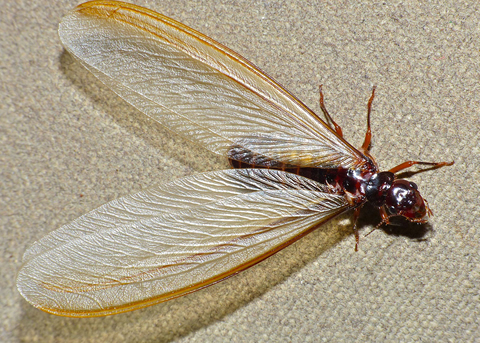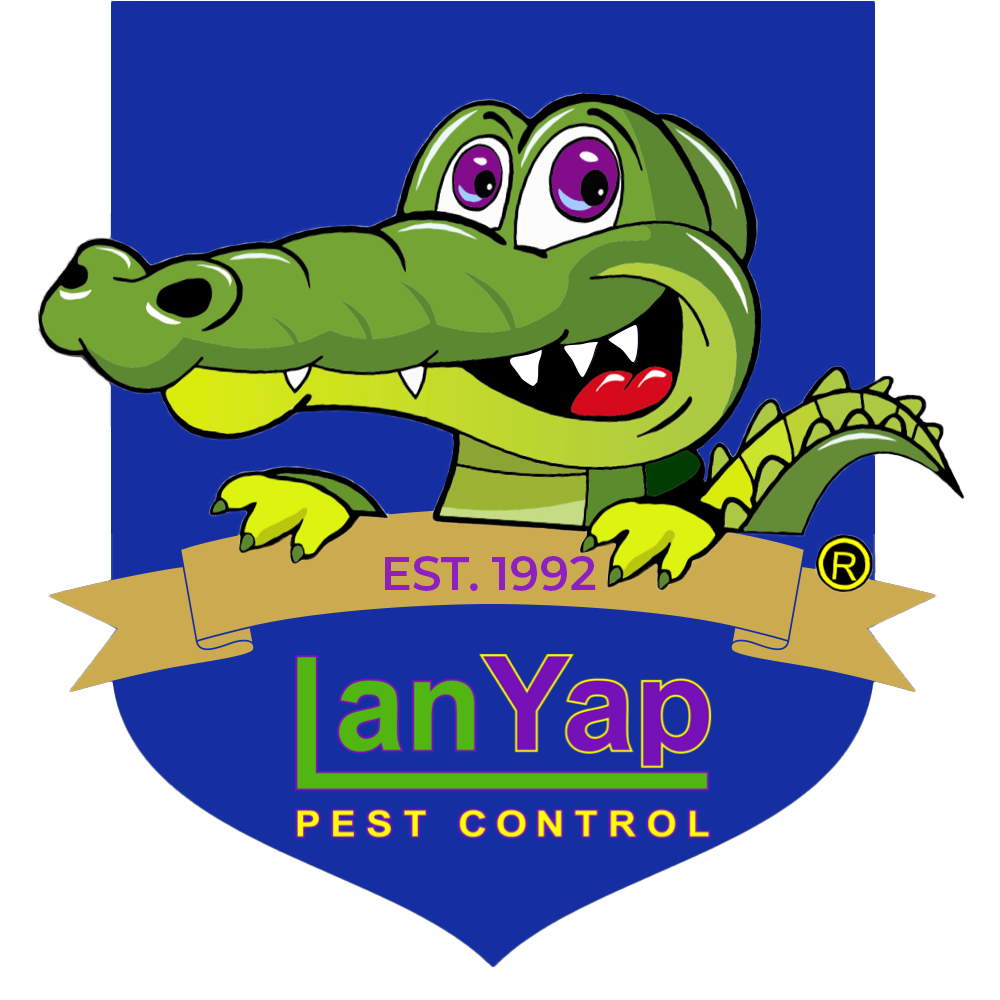Formosan Termites
Coptotermes formosanus Shiraki, found primarily in the greater Houston-Galveston area and Beaumont-Port Arthur, is another subterranean species. It is larger than the subterranean termite and has a pale yellow body color; the head shape of the soldier cast is more oval; and the wings of reproductives are hairy. Colonies, found in spaces such as wall voids or in hollows dug in wood both in or on the ground, are built of a mixture of chewed wood and soil cemented together, called carton. Reproductives swarm in late afternoon and evening, and are attracted to lights.
Subterranean Termites

Drywood Termites
Drywood termites are light yellow to black with clear to smoky gray wings, about 7/16 inch long. Worker termites (nymphs), and are up to 3/8 inch long, wingless, white to grayish with white to yellowish-brown heads, and soldiers are similar but with large rectangular darker heads bearing well developed jaws (mandibles) used to defend the colony.
Termites are occasionally confused with winged ants (Hymenoptera: Formicidae): termites have body segments that are similar in width, hair-like (filiform) antennae and, when present, four wings of equal length; ants have narrow waists, elbowed antennae and forewings that are longer than hind wings. The differences between drywood termites (Kalotermitidae) and subterranean (Rhinotermitidae) are easiest to see in the venation of the wings of the adult reproductive caste. Wings of drywood termites have three heavy veins along the basal part of the front edge of the forewing and the crossveins near the wing tip are angled, making trapezoidal cells. Subterranean termite wings have just two major veins along the front edge of the forewing and the cross veins towards the wingtip are perpendicular to these veins, making square and rectangular cells. Soldier and worker castes are more difficult to distinguish but are generally larger than subterranean termites. However, other characteristics of infested wood can be used for identification.




